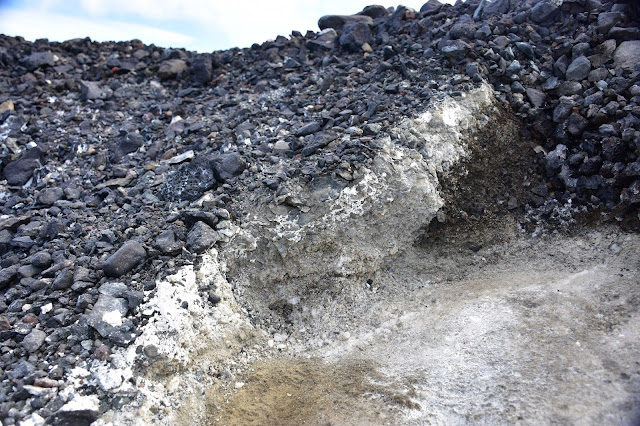 |
| Natalie and I begin to dig a pit. |
Digging can be a long process, first you have to clear the large boulders, then the gravel, and then the fine sediment that covers the ice like a blanket. It takes a lot of forearm strength. However, this time as we dug we found something strange: a 20cm thick layer of salt on top of the ice! And not just any salt but a hydrated salt. Usually a little salt is normal, as it is left behind as the ice or snow sublimates away from the moraine, but this large of an amount was unexpected. We're still not really sure what it means, but it was really cool!
 |
| Drew and Nat document their pit. |
 |
| Dirty ice. |
 |
| Sediment sampling. |
 |
| Drew clears off the ice. |
 |
| 20 cm of salt!!!! |
 |
| Clean ice surrounded by powdery salt. |
 |
| Gravel-salt-soft sediment-ice. |
 |
| Hunk of chipped off salt crystals. |
 |
| Close up of the crystals. |
 |
| Before the dig, a salty hummock. |
 |
| After the dig, clean ice pit. |
 |
| Drew making notes against a cloudy Royal Society Range. |
 |
| Natalie and me on our way back to camp after a day of sampling. Bye Folks! |
-Emelia Chamberlain

We need to be hydrated to sustain the energy that we need all the time.
ReplyDeleteTrue Hydration